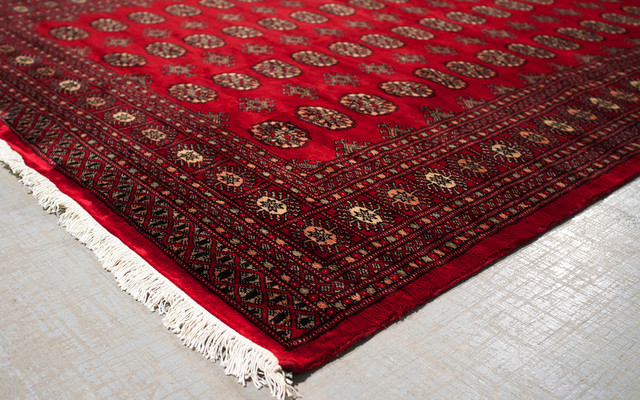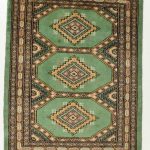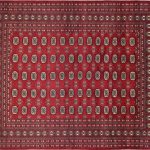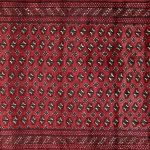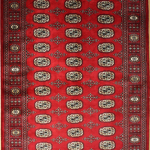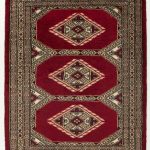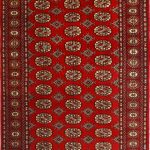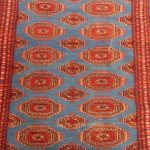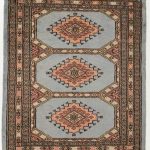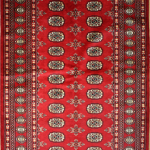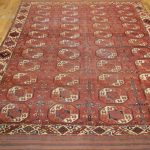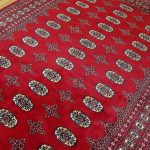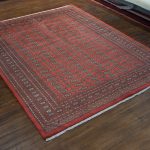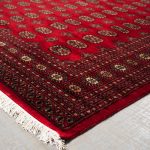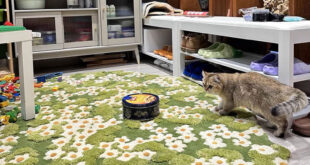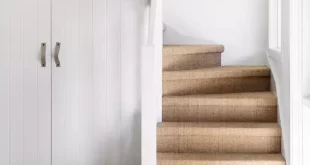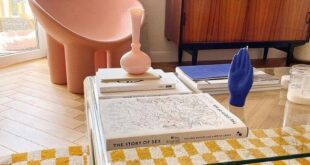Introduction
At times referred to as Turkmen rugs, Bokhara rugs are hand-made carpets designed to be placed on the floor. The name Bokhara is the city in Turkestan that was known to be source of the rugs. They were traditionally made by nomadic tribesmen in Central Asia before mass production started in Iran, India and Afghanistan.
Original Turkmen rugs were hand-crafted using such locally available materials as wool obtained from herds, vegetable dyes and other natural dyes. Thanks to technology, these rugs are now commercially produced in Iran and Afghanistan using synthetic materials of different colors. These are mostly for export to other countries. Even so, it is very easy to identify a hand-made rug from machine-made rugs.
The original Bhokaras are classic pieces and have of late become very popular owing to their unique designs and appeal.
Characteristics
Bokhara rugs are traditionally deep red in color. They also feature octagonal designs of elephant foot. Unlike the rugs, the designs are in most cases in dark blue, brown or black. Because they were hand-made by different tribes, authentic rugs feature different design shapes. The foundation material for making these rugs is wool, which produces the soft and classic touch of the rugs.
Types
Different types of rugs are available. They include:
- Salor Bokharas – These are traditionally hand-crafted by Salor tribesmen living toward north of Afghanistan. They are of very good quality and are rare in the market. They are deep red and feature octagons in two rows. Each large octagon also features a small octagon within with the exterior of the large octagon featuring flower designs.
- Tekke Bokharas – These are the most popular of all Bokhara rugs. They are traditionally hand crafted by Tekke tribesmen. There are royal and prayer Tekke Bokharas. Royal Bokharas are general rugs red in color. They feature rows of elongated octagons and diamond designs that join both vertically and horizontally. On the other hand, prayer rugs are strictly for conducting prayers. They differ from royal rugs in that they feature crossbars that divide the rugs into four sections.
- Yomud Bokharas – These are traditionally hand crafted by Yomud tribesmen found across Central Asia. In addition to their deep-red color, they are divided into four sections by a Greek cross. They are traditionally designed with small octagons in each of the four sections.
There are also other types of Bokharas that are otherwise not common and not popular. They include Beshiir Bokharas that feature zig-zag patterns along the edges and Pinde Bokharas that feature prayer niches.
 decorafit.com Design ideas for your home and patio
decorafit.com Design ideas for your home and patio
